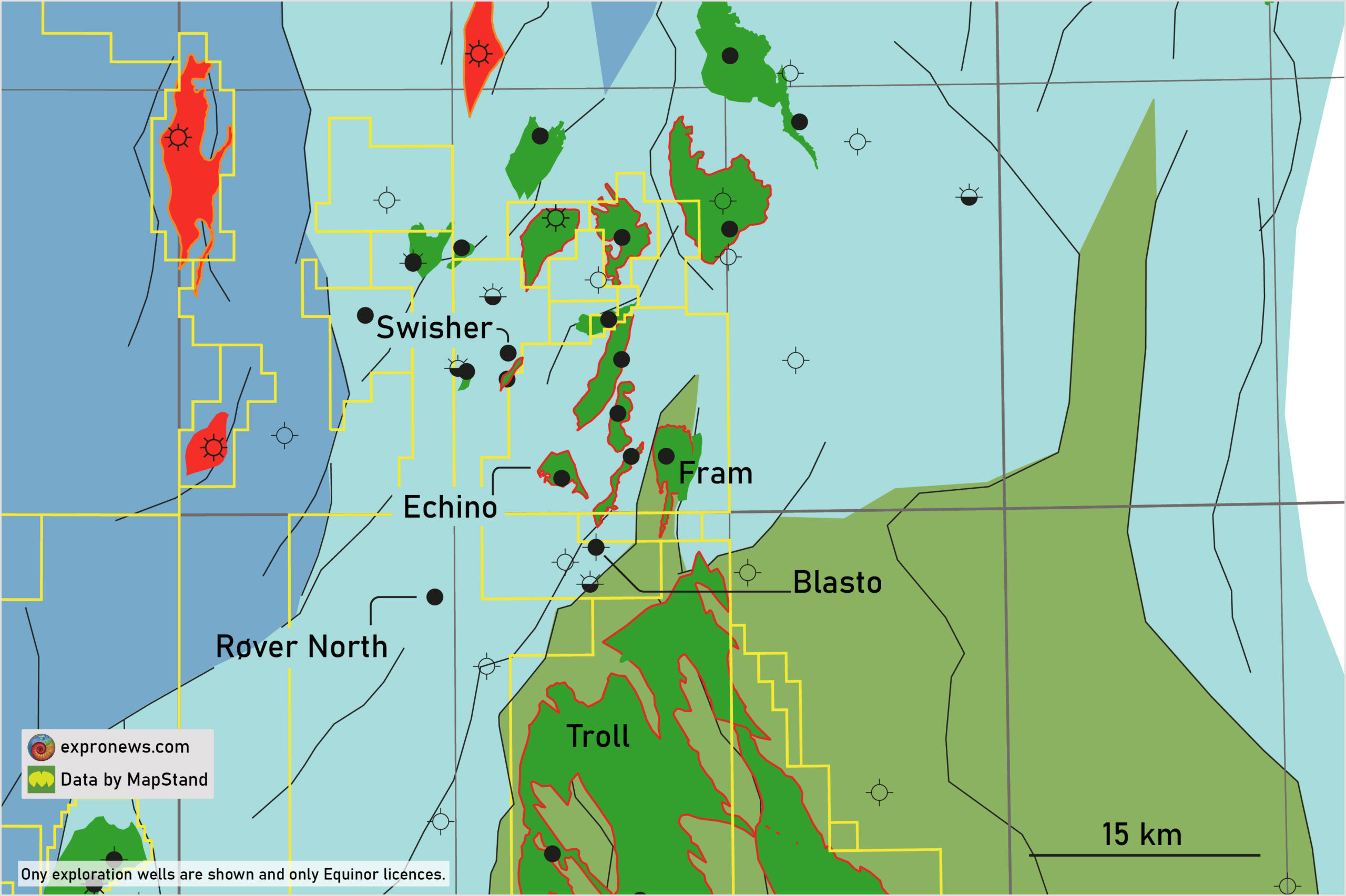In less than two years, Equinor and partners have succeeded in confirming four consecutive oil finds: Echino (65 MMboe recoverable), Swisher (13 – 38 MMboe recoverable), Røver Nord (44 – 69 MMboe recoverable) and Blasto ( 75 – 120 MMboe recoverable), totalling some 250 MMboe. This compares to the 500 MMboe of original reserves in the Fram field.
The Fram field was discovered in 1990 and comprises two main structures, Fram Vest and Fram Øst. Fram produces oil and associated gas from sandstones of Middle Jurassic age in the Brent Group, and from Upper Jurassic sandstones in a marine fan system in the Draupne Formation and the shallow marine Sognefjord Formation. The reservoirs have a gas cap and lie in several isolated, rotated fault blocks.
Fram (“Forward”) is a ship that was used in expeditions to the Arctic and Antarctic regions by the Norwegian explorers Fridtjof Nansen, Otto Sverdrup, Oscar Wisting, and Roald Amundsen between 1893 and 1912.
Even though the finds are all in the same area, the specific geological setting, the associated risks and the exploration techniques used to de-risk the prospects were different for all.
For instance, the Echino discovery resulted in the secondary Brent target to hold much more than predicted, with a deeper column and thicker sands than foreseen. In contrast, the Upper Jurassic Sognefjord sandstones (the primary target) did not come in as was hoped and the appraisal well that tested the same Upper Jurassic interval also came in dry. The Echino discovery accounts for around 65 MMboe recoverable.
The background behind Røver North discovery is different even though the reservoir target was the same as Echino – Brent sandstones. Røver North is located in an area of the Lomre Terrace that until recently had never been drilled. A likely explanation for this is the high perceived risk of hydrocarbon trapping, which must have been carefully assessed using the new CGG survey over the area. Also, due to its “proximal” location in the Brent delta, the Etive Fm in Røver North is likely to be thin. Therefore, most of the oil is probably hosted in the Oseberg Fm.

The most recent Blasto discovery is again in another league, especially with regards to how it was de-risked. Situated in a fault block previously drilled by Shell in 1982, the operator has been able to use 4D seismic data to further support the presence of hydrocarbons in the closure. This is a great example of innovative ways of using data originally acquired to monitor hydrocarbon sweep in existing fields.
Given this string of successful exploration drilling, it is no surprise that Equinor is now planning for two more wells in the area: Apodida and Toppand.
To learn more about this success story, listen to Kristina Helland-Hansen (VP EXP NUKE Assets North Sea at Equinor) who will give a keynote at the forthcoming conference NCS Exploration – Recent Advances in Exploration Technology, May 19-20, entitled “Greater Fram – The Ship That Never Sinks!”
HENK KOMBRINK




